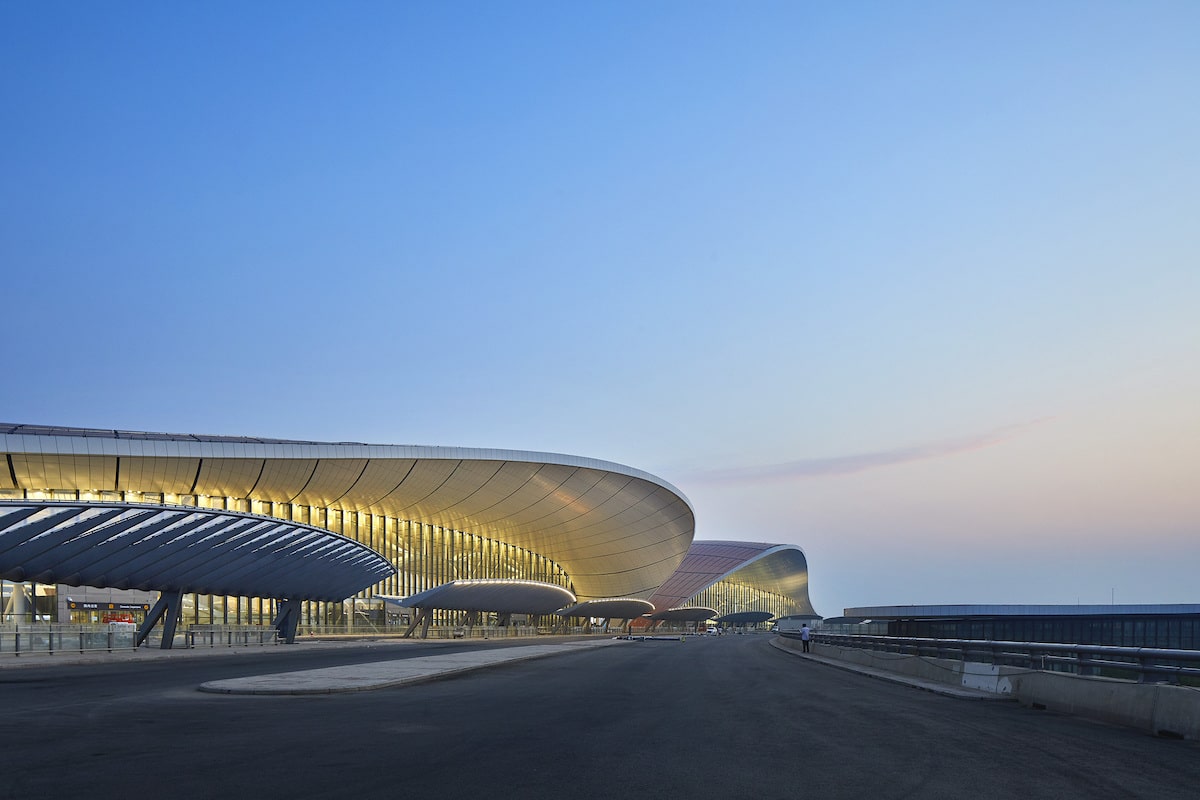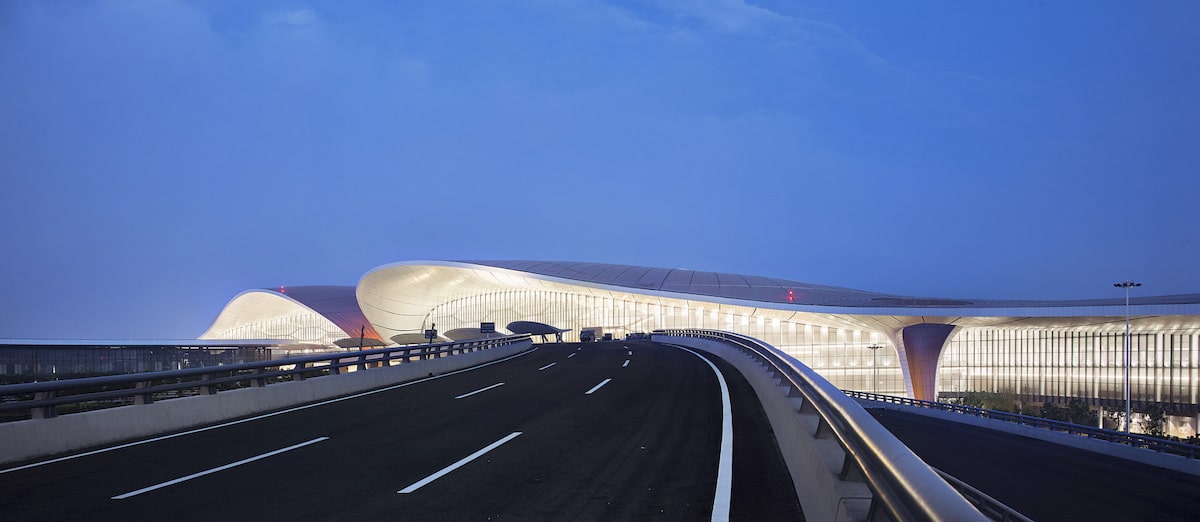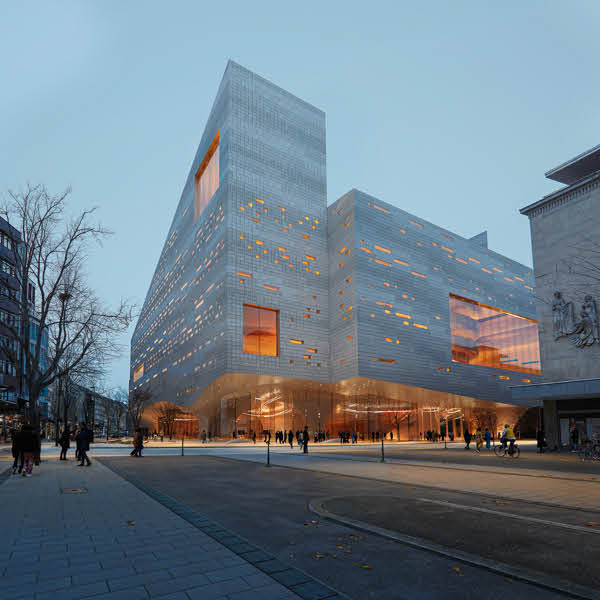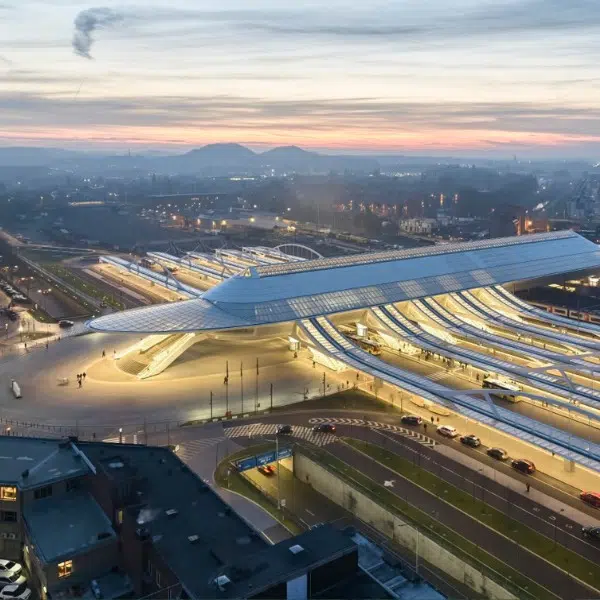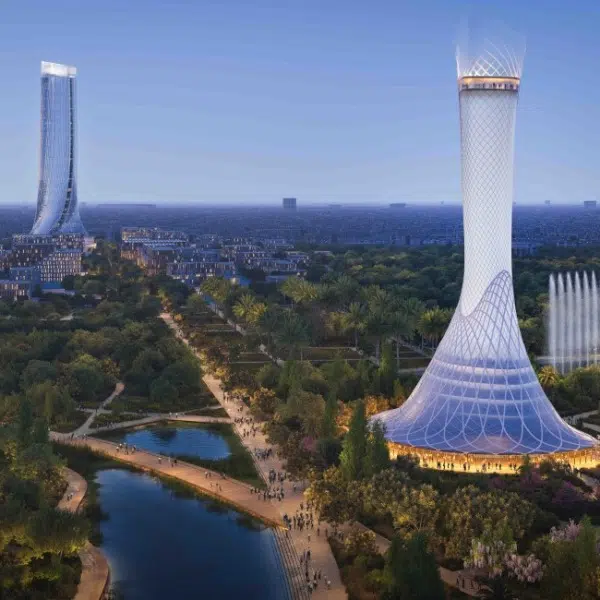
Photo: Stock Photos from lazy dragon/Shutterstock
Zaha Hadid Architects has completed yet another stunning project in China's capital with the opening of the Daxing International Airport (PKX). Created to help alleviate congestion in Beijing's existing airports, which are operating at full capacity, the 700,000-square-meter (7.5-million-square-foot) passenger terminal will start by serving 45 million travelers. By 2025 it will accommodate 72 million passengers and the architecture has been planned to expand to an eventual 100 million. Located 46 km (28.5 mi) from the city center, it's reachable in just 20 minutes by express train.
The starfish shape of the airport makes it the largest single building terminal in the world and has the added convenience of shortening transit times for passengers. Six radial forms move around a central area in a nod to traditional Chinese architecture, where interconnected spaces revolve around a courtyard. The compact design means that passengers can move seamlessly from one area to the next without having to rely on shuttles. In fact, the longest walking time to any of the 79 gates is less than 8 minutes.
True to form, Zaha Hadid Architects has created a luminous interior filled with clean, curving lines and organic shapes. Emerging from the central courtyard are six petal-like forms that not only support the structure but allow natural light to flow through the space. Additional skylights filter through the terminal, enhancing the light within the airport. These skylights also provide an intuitive navigation system that helps guide passengers to and from their gates.
Daxing International Airport is not only functional, but green whenever possible. Photovoltaic power generation is installed throughout the building and there is a rainwater collection and water management system in place. The system allows for the natural storage, natural permeation, and natural purification of up to 2.8 million cubic meters of water in new wetlands, lakes, and streams. This will both prevent flooding and combat the “heat island” effect that can build up during the summer within the local microclimate.
Daxing International Airport is located just 20 minutes from central Beijing and currently serves 45 million passengers.
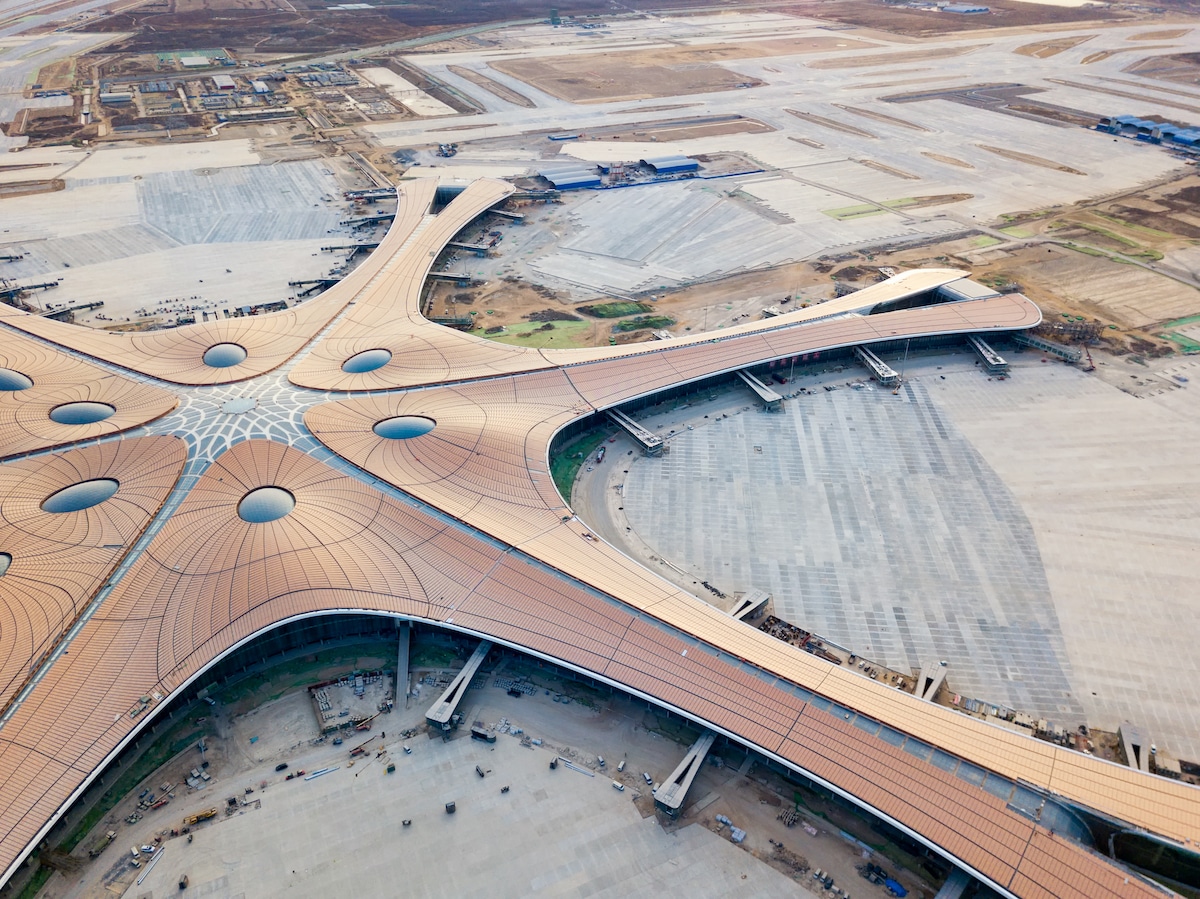
Photo: Stock Photos from lazy dragon/Shutterstock
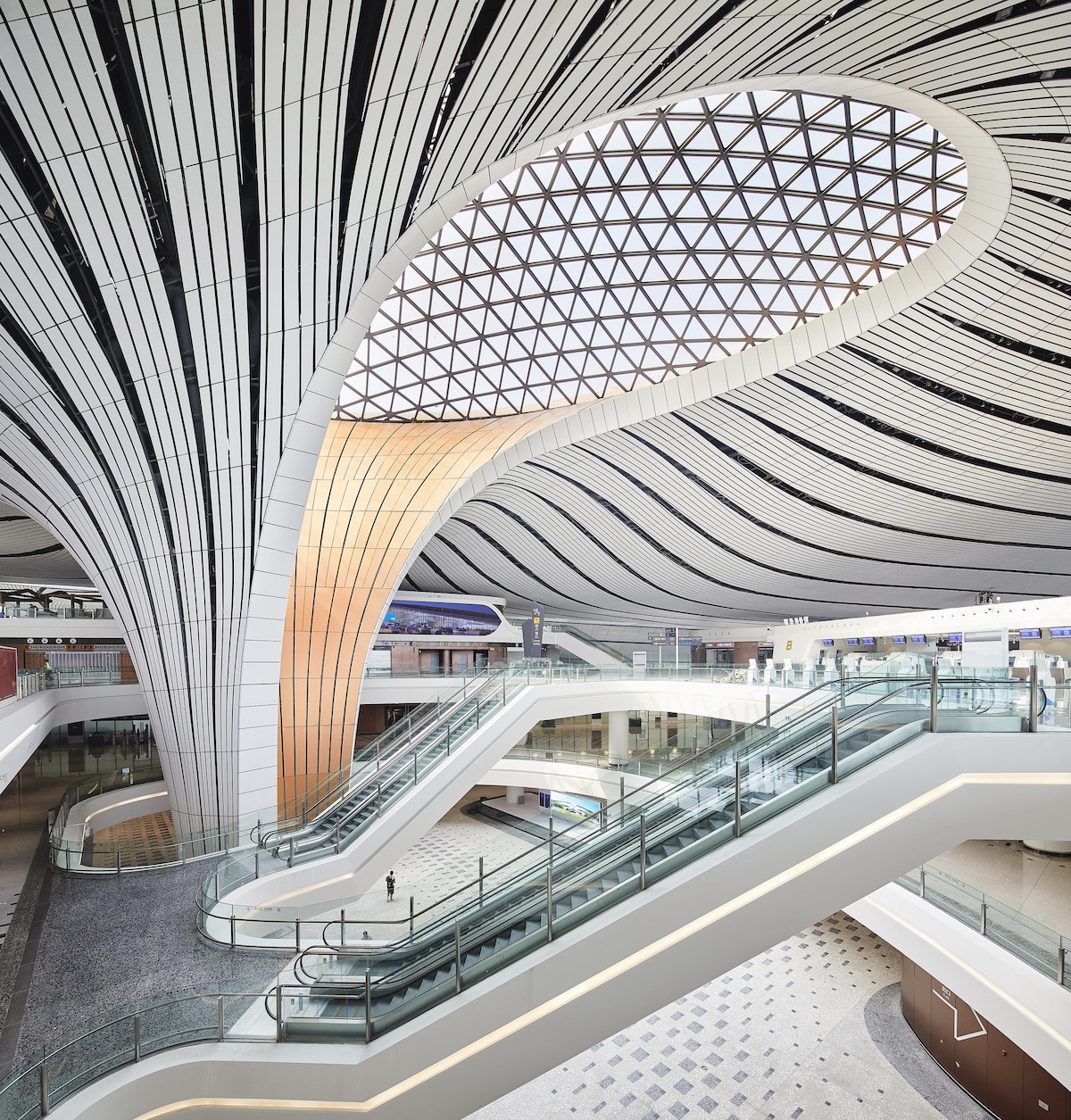
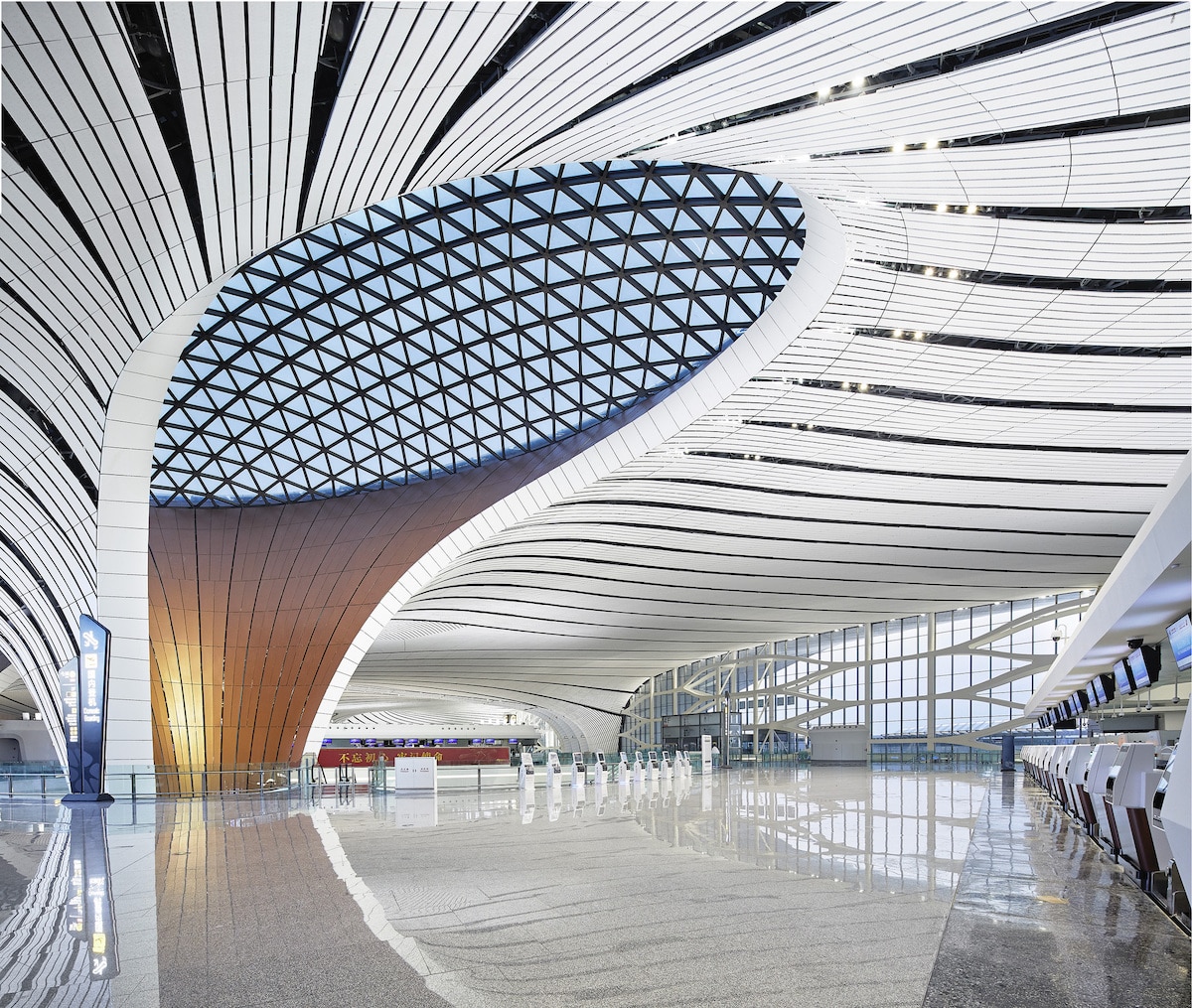
Zaha Hadid Architects designed the compact terminal around a central courtyard in a nod to traditional Chinese architecture.
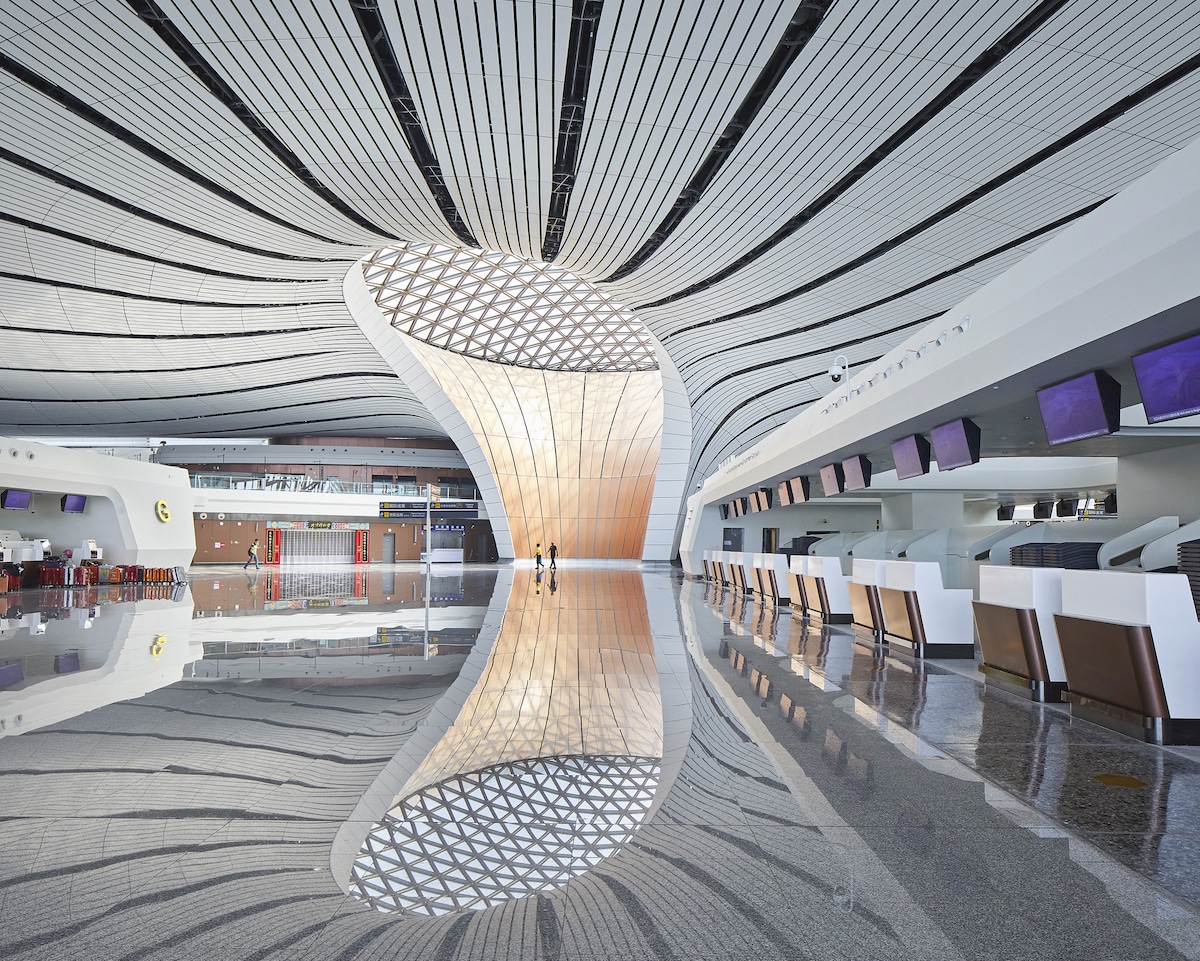
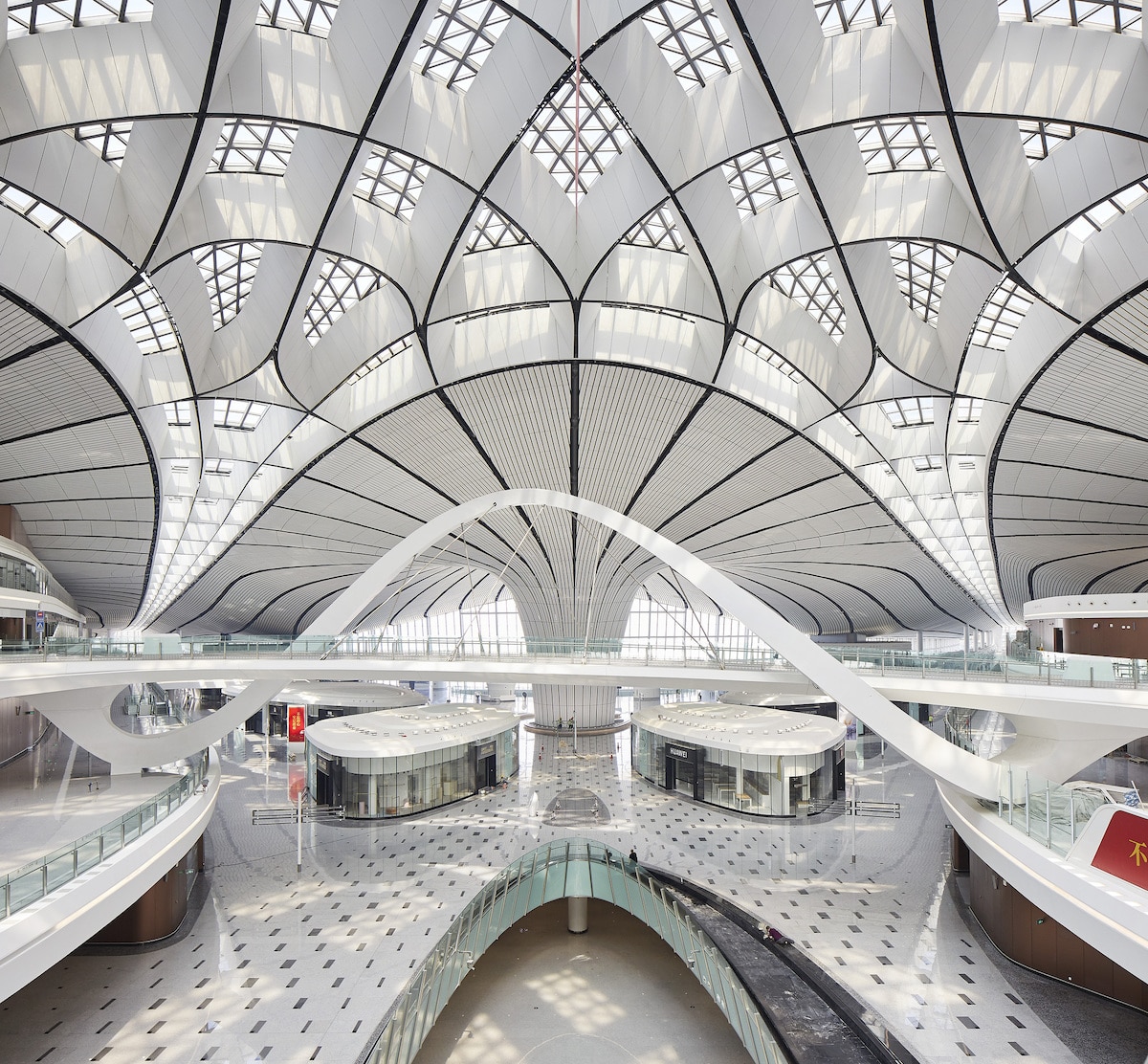


A network of skylights lets in natural light and gently guides passengers toward their gates.
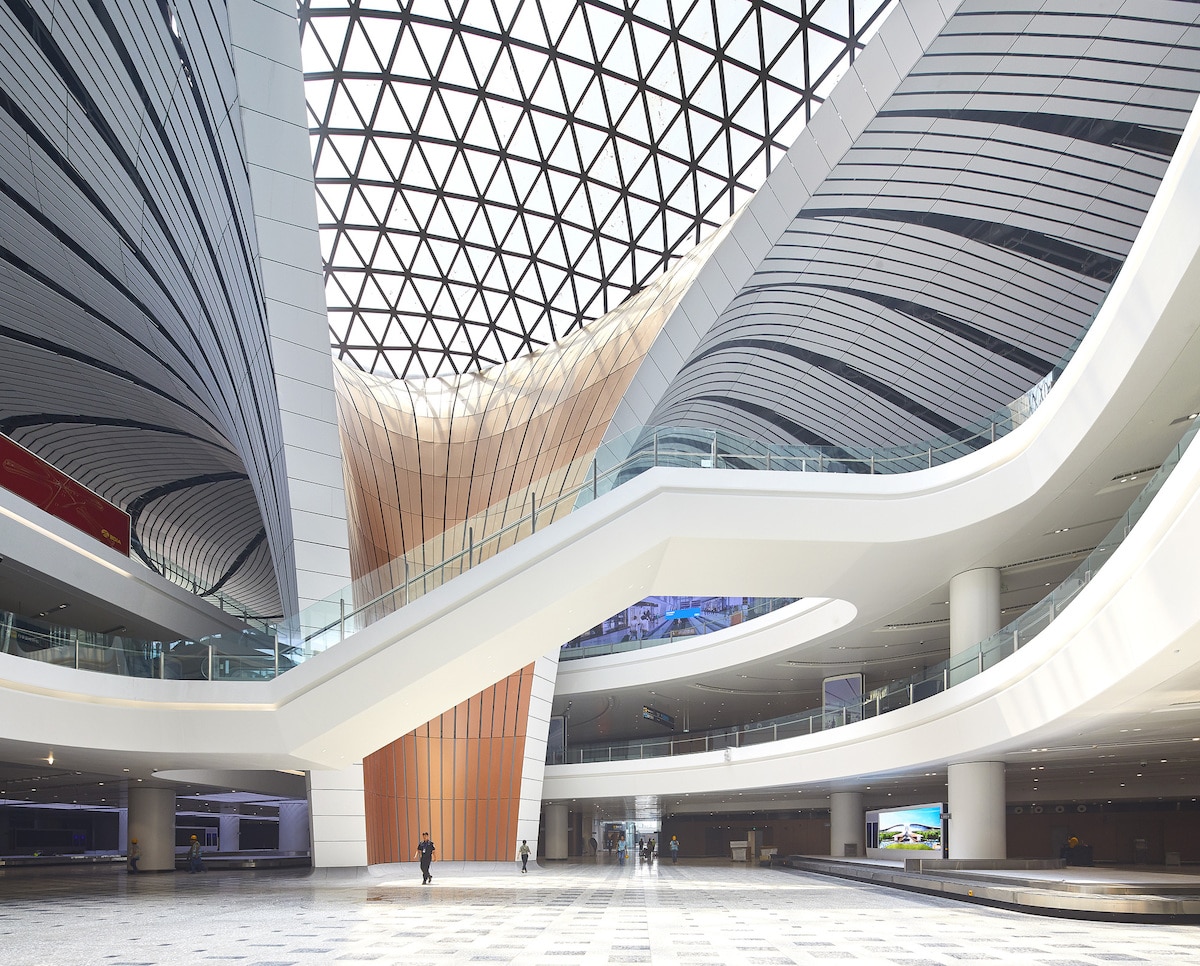
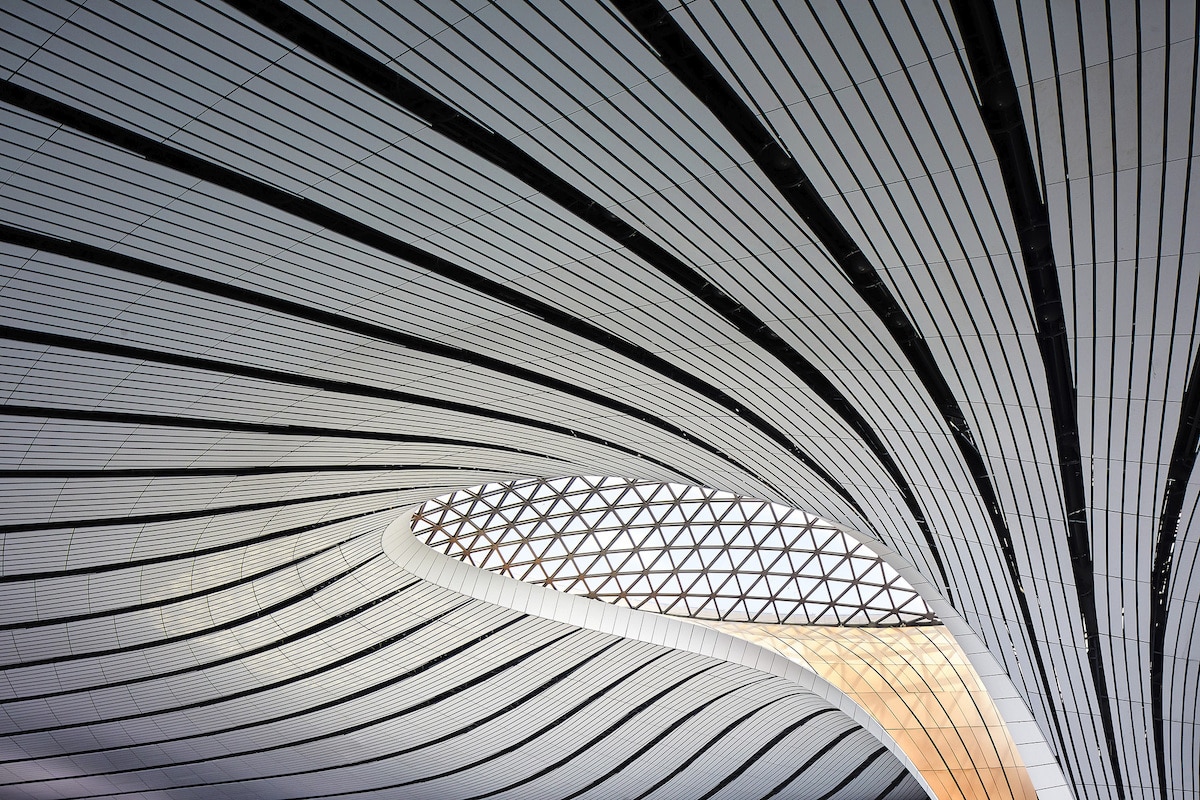
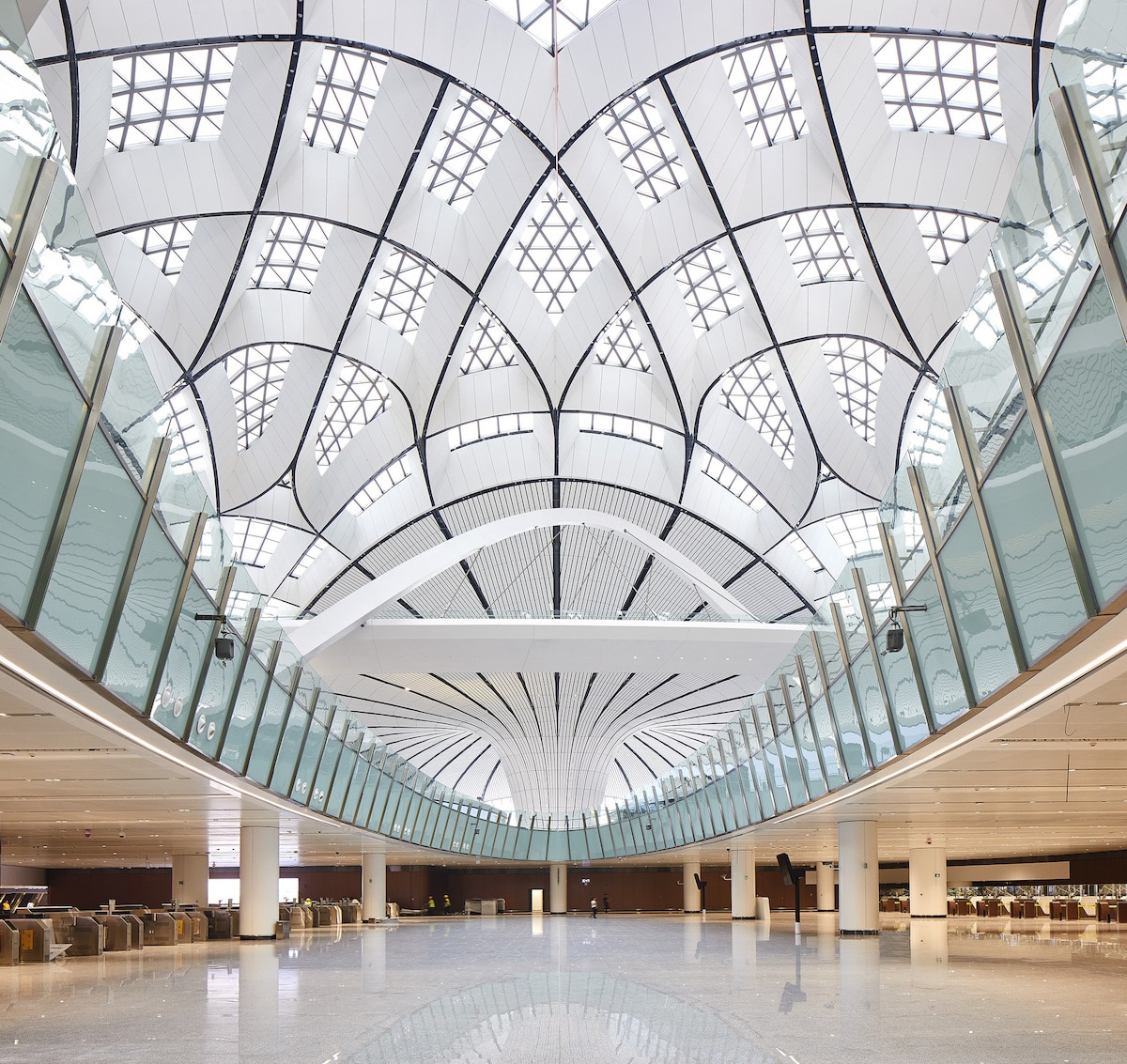
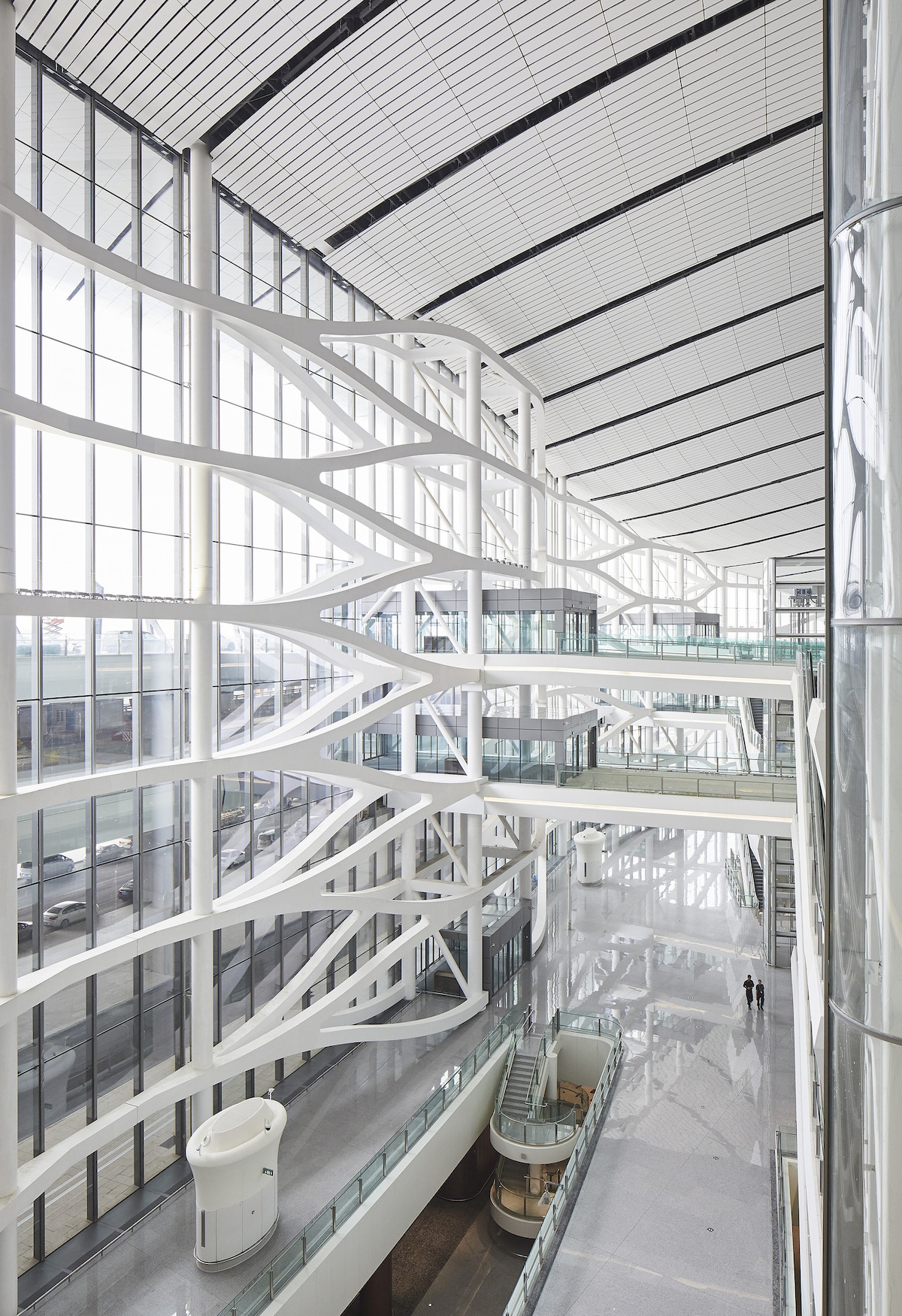
The flexible design will eventually accommodate up to 100 million passengers.
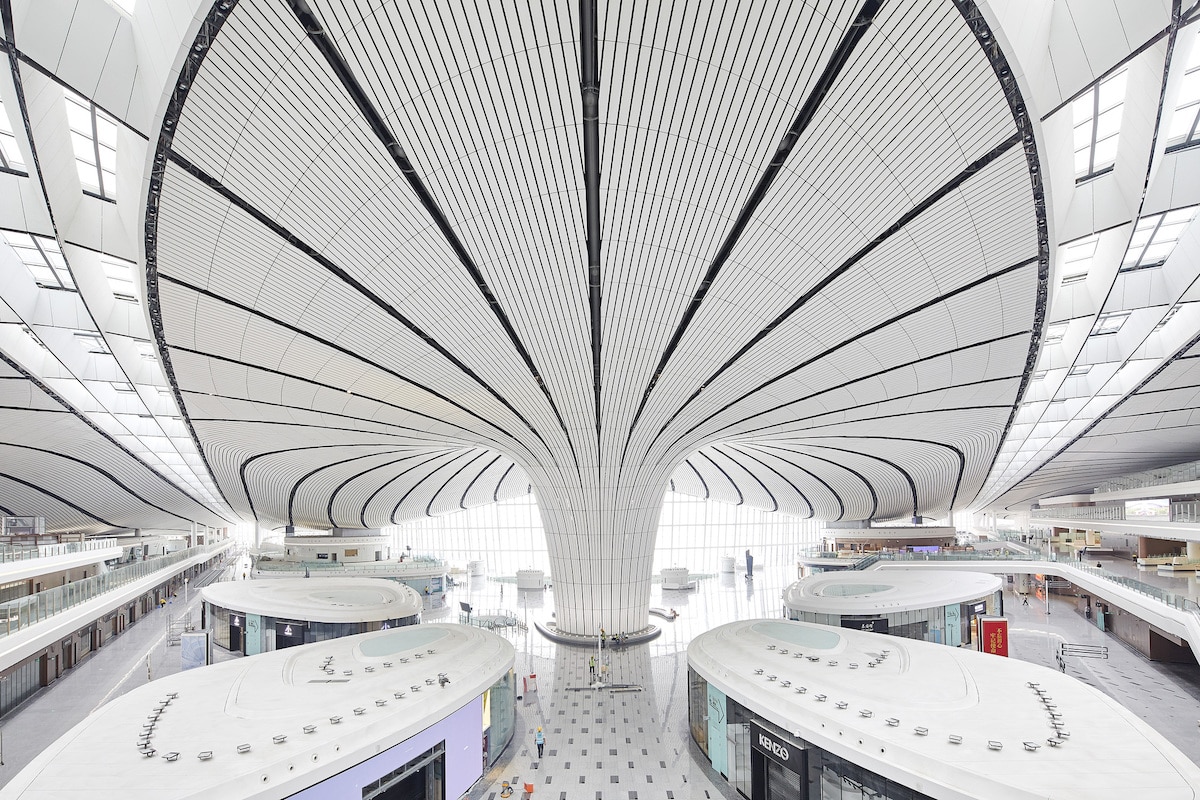

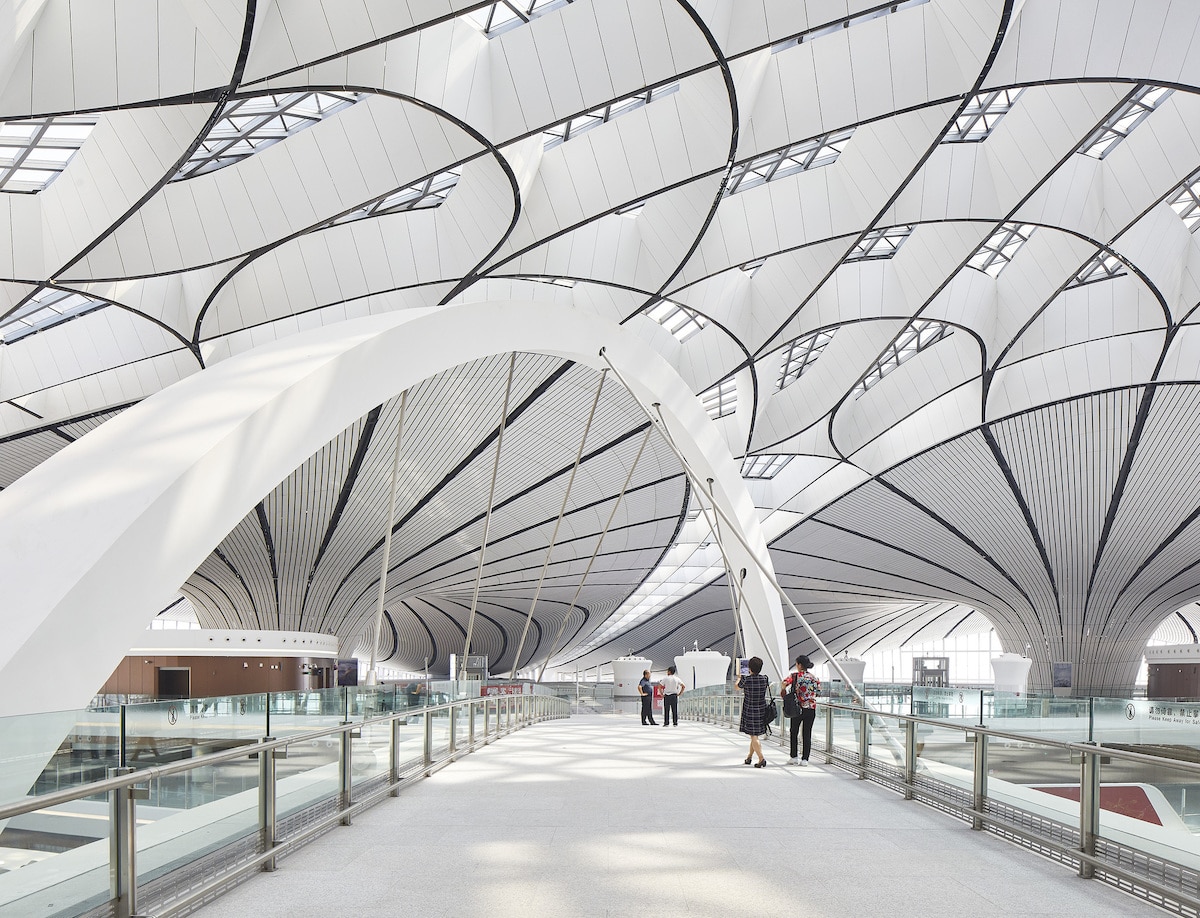
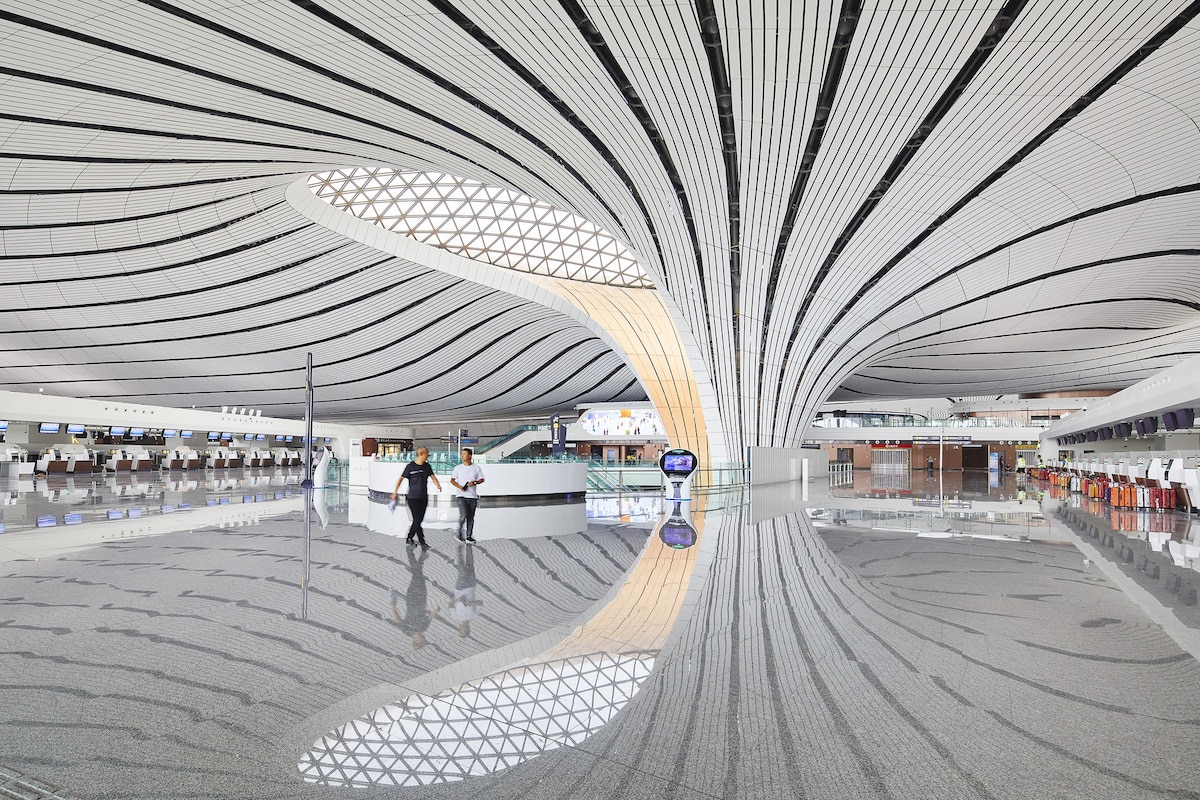
This makes Daxing International Airport the world's largest single-building terminal.
